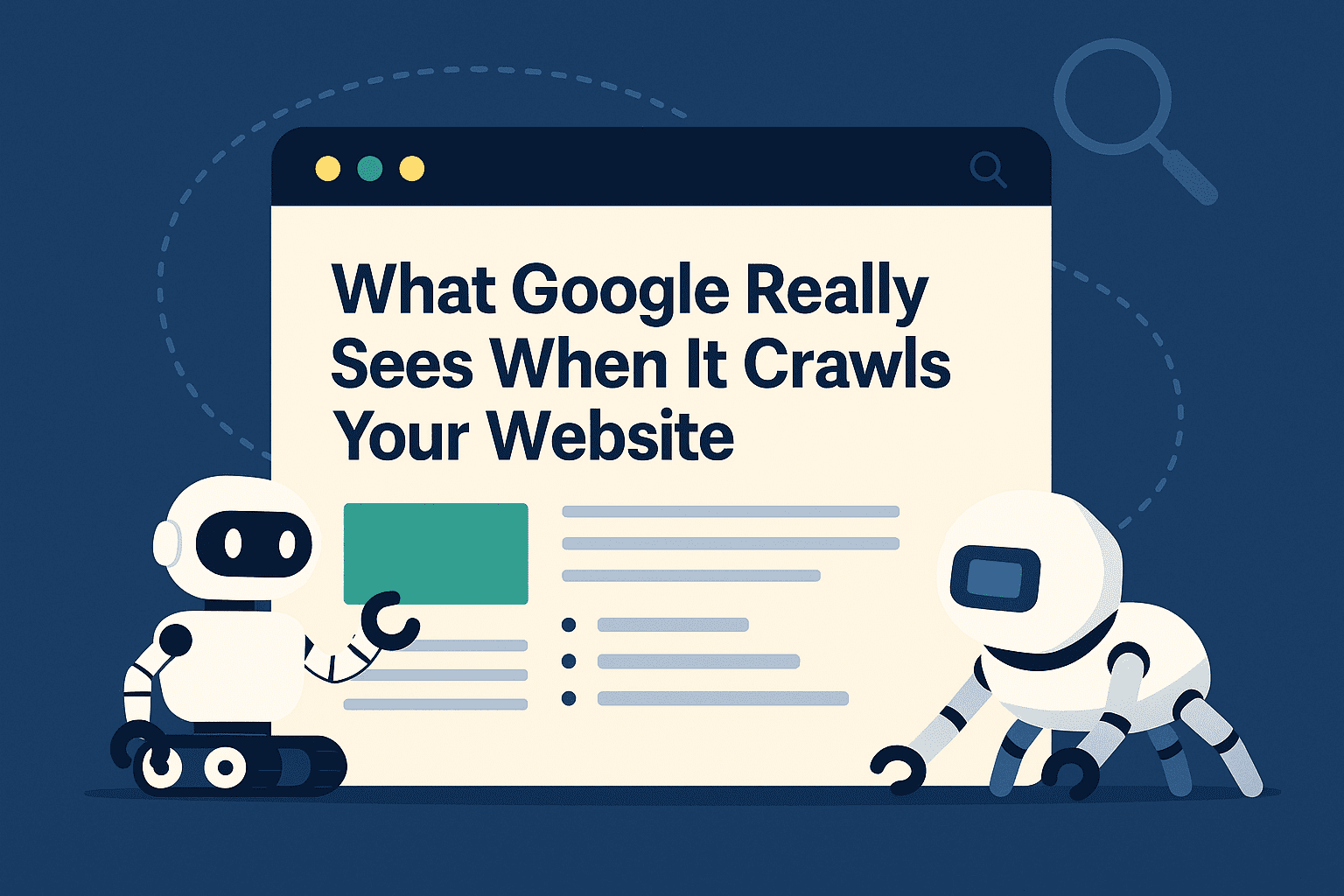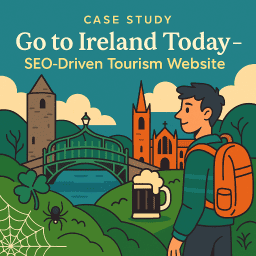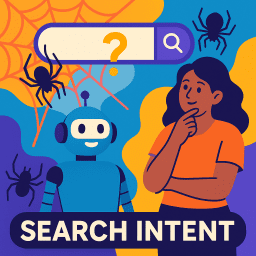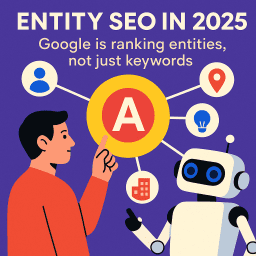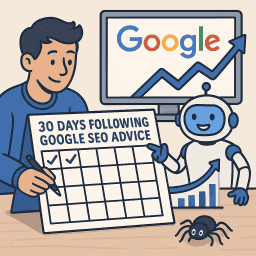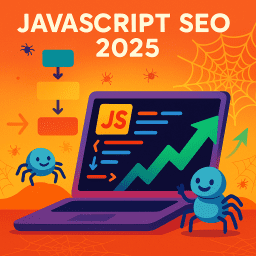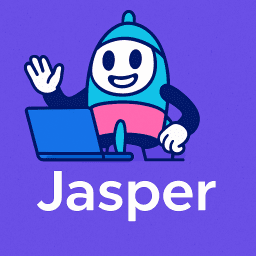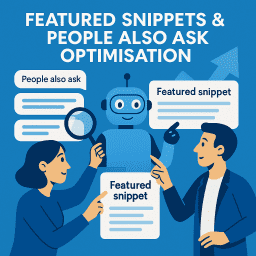What Google and AI See When Crawling Your Website in 2025
Why your best content might be invisible to AI search
🔥 The Invisible Web: Why AI Can’t Find Your Best Pages
Your website might look perfect to humans—but what about to Google, ChatGPT, or Perplexity? AI search engines see a stripped-down version of your site. If your best content is hidden in the wrong place, it’s as good as gone.
This post will show you what AI crawlers actually see, how to test your own visibility, and how to fix common issues making your content invisible to modern search engines.
👁️ What AI Search Engines Actually See
AI-driven systems like Google’s AI Overview, Perplexity, and ChatGPT Search don’t wait for JavaScript or animations. They consume your raw HTML code—the plain structure your server sends before any fancy interactions load.
Here’s what these systems focus on:
- ✅ Clear HTML headings (H1, H2, H3)
- ✅ Paragraph text that loads immediately
- ✅ Bullet points, numbered lists, and summary sections
- ✅ Schema markup (like FAQ or HowTo structured data)
And here’s what they typically ignore:
- ❌ Content hidden behind JavaScript tabs or accordions
- ❌ Interactive widgets that load content after a click
- ❌ Images without descriptive alt text
- ❌ Content that loads asynchronously
🔍 How to Run a 5-Minute AI Visibility Test
Want to know what Google and ChatGPT actually see?
- Visit your page and right-click → View Page Source (or Ctrl+U)
- Use Ctrl+F to search for your most important selling points
- If your key messages aren’t in that raw HTML, AI likely can’t see them
This quick test will show you whether your content is built for people only—or for machines too.
⚙️ How to Fix It: AI-Friendly Content Structure
To become visible to Google’s AI and other search engines, you need to make your content readable, structured, and semantic. Here’s how:
1. Use Clear Headings and Hierarchies
- Use one H1 tag per page to state your main topic
- Use H2s for big sections like “Features” or “Pricing”
- Use H3s for sub-points or sub-questions
2. Add Structured Markup (Schema)
Help AI systems understand your content by labelling it with JSON-LD. Example for FAQs:
<script type="application/ld+json">
{
"@context": "https://schema.org",
"@type": "FAQPage",
"mainEntity": [{
"@type": "Question",
"name": "What is technical SEO?",
"acceptedAnswer": {
"@type": "Answer",
"text": "Technical SEO refers to website improvements that help search engines crawl and index your content more effectively."
}
}]
}
</script>
3. Avoid Hiding Key Content in JavaScript
- Move critical selling points into plain HTML
- If using tabs or dynamic widgets, also render that content in static HTML where possible
- Prefer server-side rendering over client-side when SEO is a priority
4. Improve Your Page Load Performance
Slow-loading pages can hurt crawl frequency. Improve speed by:
- ✅ Compressing images with tools like Smush or TinyPNG
- ✅ Using caching and lazy loading
- ✅ Cleaning up unused scripts and styles
📊 Use the Right Tools to Validate Your Work
- Screaming Frog – Run a crawl simulation to see what’s accessible
- Google Search Console – Use the URL Inspection tool to view how Googlebot sees the page
- ChatGPT / Perplexity – Ask them direct queries and see which content they pull from your site
🔄 Future-Proof Your Website for AI Search
AI search is only going to grow. Prepare now by creating:
- 🔗 Topic clusters that show authority
- 📚 Definitive resource pages with real value
- 🎤 Authorship signals (bios, credentials, quotes)
- 📐 Consistent entity naming across all pages
✅ Final Thoughts
If AI can’t see your content, it won’t recommend it. Optimising your HTML structure, speed, and markup isn’t just “technical stuff”—it’s the gateway to visibility in AI-led search experiences.
Make your pages easy for machines to read, and you’ll make them better for people too.
“If your best content is invisible to machines, it might as well not exist.”
— David Roche
📝 What Google & AI See: FAQs
What does Google actually see when crawling my website in 2025?
Mainly the raw HTML your server delivers—headings, paragraphs, lists, and any JSON-LD markup—before JavaScript or animations run.
Does Google execute JavaScript to index hidden content?
Only partially. AI search engines take a quick “first look” at unrendered HTML, so critical information tucked inside JS tabs or accordions may be skipped.
How can I test what Google & ChatGPT actually see on my page?
Open your page, right-click → “View Page Source,” then search for your key selling points. If they’re missing from that raw code, AI crawlers probably can’t find them.
Which content elements do AI crawlers ignore most often?
Interactive widgets, post-load JavaScript text, images without alt text, and any copy that appears only after a user clicks or scrolls.
What’s the quickest way to make hidden tab content visible to Google?
Render that same text in the initial HTML—either directly on the page or via server-side rendering—so it’s accessible even with JS turned off.
Should I add structured data, and which type is best?
Yes—use JSON-LD schema such as FAQPage, HowTo, Product, or Article to supply explicit context that AI models can parse instantly.
How does page-load speed affect crawling and indexing?
Slow pages reduce crawl frequency and waste crawl budget. Compress images, enable caching, and remove unused scripts to keep your HTML fast and lightweight.
Which tools reveal what Googlebot sees?
Screaming Frog for crawl simulations, Google Search Console’s URL Inspection, and even ChatGPT/Perplexity queries to check whether they quote your content.
Is server-side rendering better for SEO than client-side?
Yes—when SEO is a priority, pre-render pages on the server so every crawler gets full content without waiting for JavaScript to run.
What’s the first step to future-proof my site for AI search?
Create topic clusters with clear headings, add authorship signals, and keep entity names consistent across every page to help AI models understand your expertise.


